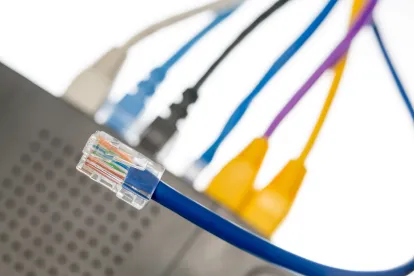In Depth
On December 14, 2017, the Federal Communications Commission (FCC) voted 3–2 along party lines to repeal the Open Internet Order, more commonly known as the net-neutrality rules. The Open Internet Order was a 2015 FCC regulation designating private internet service providers (ISPs) as common carrier providers of a utility under Title II of the Communications Act of 1934. While the decision to repeal the Open Internet Order has drawn the scrutiny of the media, consumers and industry, health care consumers and providers have been left wondering how the repeal may affect their ability to receive and deliver health care using digital health tools such as telemedicine. The consequences of the FCC’s move to repeal the Open Internet Order and replace it with the Restoring Internet Freedom Order remain speculative, but the following sets forth the general legal impact of the Restoring Internet Freedom Order in the context of health care.
What Is Net Neutrality and What Did Its Repeal Change?
Net neutrality is the concept that every packet of data transmitted through the internet must be treated the same regardless of its content, size, and originating and end site. The Open Internet Order restricted ISPs from interfering with the capabilities of content providers disseminating their content utilizing the internet. More specifically, the Open Internet Order prohibited blocking access to websites, throttling (i.e., slowing) website download speeds and requiring payment for prioritization of internet traffic. Net neutrality became an administrative regulation under the Obama administration’s FCC in 2015, following years of litigation and failed legislation to create substantive law addressing the subject area. Additionally, the Open Internet Order required public disclosure regarding network management practices, performance and commercial terms of broadband access services sufficient for consumers to make informed choices regarding use of such services and for content, application, service and device providers to develop, market and maintain offerings.
Upon repeal of the Open Internet Order, broadband internet access is reclassified as an “information service,” and ISPs are no longer common carriers subject to Title II of the Communications Act of 1934. The repeal moves internet service to a free market system pursuant to the FCC’s Restoring Internet Freedom Order, whereby ISPs must comply with new transparency requirements to disclose any throttling, blocking or paid prioritization arrangements, but will not be subject to any explicit restrictions on use of these mechanisms. The FCC argues that deregulation will facilitate increased investment into broadband internet infrastructure and generate competition amongst the ISPs.
How Does the Repeal Affect Digital Health and Health Care Providers?
The internet is central to both health care providers and consumers, as digital connectivity is a key component of numerous patient-practitioner encounters in the health care space. Telemedicine programs require strong internet connections and consume a considerable amount of data in streaming interactions. A number of electronic health record (EHR) systems are cloud based, and access to a cloud-based EHR requires a high-speed connection. Such cloud-based systems may be accessed by individuals across multiple states or even countries that will all be serviced by different ISPs. Further, remote monitoring of patients in home-health settings or in rural areas requires data to be transmitted on a real-time basis to central aggregating software or applications, and then forwarded on to providers in a number of instances. Internet of Things devices “talk” to one another using internet connectivity, facilitating data sharing on a real-time basis and enabling compilation of data to track an individual’s health trends.
While the net neutrality rules were in place, the connectivity of each of these services and devices could not be restricted by the ISP operating the broadband network to which they connected. For example, one telemedicine provider could not pay to have faster connectivity speeds than another telemedicine provider. Now, ISPs could (within the confines of the antitrust and trade laws, as discussed subsequently herein) create tiered pricing structures that favor certain content providers over others. These tiered pricing structures could in turn create “fast lanes” that prioritize certain internet traffic and generally increase costs for providers. Thus, commentators have indicated that without net neutrality in place, there is potential for ISPs to control which content providers will be able to function at their highest capability to deliver their services. For example, if a telemedicine provider has the infrastructure to create a connection delivering high-quality image and sound, but access to the telemedicine provider’s web servers is throttled, the telemedicine provider will only be able to provide services with a lower-quality image and sound capability. This structure could raise the barrier to entry for new health care technologies and new telemedicine companies, causing rural providers or hospitals with less favorable revenues to cut innovative programs to increase access. Additionally, should an ISP have a related cloud-based services division or subsidiary, it could provide favorable connectivity to that cloud over other clouds, potentially affecting EHR access.
The FCC has noted that removing restrictions on ISPs should facilitate greater investment in infrastructure, including that within rural communities. This investment should increase the ability of rural communities to gain access to high-speed internet connections, which in turn could be a boon for the telemedicine industry. Additionally, the FCC promised that by deregulating, ISPs will innovate and compete, providing improved options for consumers; what these new options may look like in relation to digital health tools remains to be seen.
What Will the Regulatory Landscape Look Like?
The Federal Trade Commission (FTC) will become responsible for monitoring and evaluating arrangements between ISPs and content providers to determine whether such arrangements are anti-competitive. The FCC and FTC released an outline of a memorandum of understanding to coordinate consumer protection under the Restoring Internet Freedom Order, granting the FTC review authority for complaints of blocking, throttling, paid prioritization and congestion management.
It should be noted that the FTC attempted to regulate ISPs prior to the net neutrality rules but was stopped by the US Court of Appeals for the Ninth Circuit in an appeal of an action taken against AT&T. The basis of the refusal to allow the FTC to enforce its 15 USC § 45 (Section 5) jurisdiction was that Section 5 does not grant the FTC jurisdiction over common carriers, even for non-common-carrier services provided by a common carrier. In light of the Open Internet Order, the Ninth Circuit concluded that AT&T is and was a common carrier, a determination made based on AT&T’s status, rather than its business activities. An en banc hearing is pending before the Ninth Circuit, and if AT&T’s internet activities are ruled as protected from the FTC’s jurisdiction resulting from AT&T’s general common carrier status post-Open Internet Order repeal, ISPs will be effectively unregulated under the current regulatory schematic.
One question (of many) that remains unanswered is whether higher payment for access to a faster internet rate or exclusive access could be viewed as anti-competitive under Section 5. Additionally, given the FTC’s role in health care, advertising, data privacy, and mergers and acquisitions generally, there is some uncertainty whether the FTC has the resources and staffing to take on an additional oversight functions, and whether it will remain in this role.
General Takeaways
- ISPs could potentially grant preferential treatment to certain providers, particularly in the context of paid prioritization, but any such threat remains speculative at this stage.
- If the FCC is correct in its assumptions that reduced regulation will facilitate additional investment, rural providers may ultimately benefit and have improved ability to access and grow telemedicine programs and digital health programs generally. The FCC concurrently voted to adopt proposed rulemaking that would grant additional funding to the Rural Health Care Program to continue modernization efforts of rural health care providers’ communication systems.
- Given the public outcry over the repeal of net neutrality, it appears unlikely that ISPs will do anything to generate further controversy in the immediate future. It is a fair bet that health care will remain unaffected at least for now.





 />i
/>i

